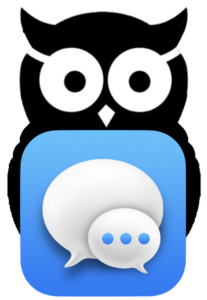You may indeed be “in trouble” but…
…this sounds like a personal message.
If it was for you then you would know just how much trouble you are in but if you have no idea what the sender is talking about, it may have been mis-sent and is not for you. Best just to ignore this one.
But option “A” was the suspicious message. It was a “clickbait” message.

“Clickbait” is a sensationalized headline that encourages you to click a link to an article, image, or video. Instead of presenting objective facts, clickbait headlines often appeal to your emotions and curiosity.
Once you click, the website hosting the link earns revenue from advertisers, but the actual content is usually of questionable quality and accuracy and can even be malicious.
Sometimes it’s difficult to spot the difference between clickbait and a legitimate headline.
Vague headlines and images that let your imagination run wild are a sign it is not real news. Clickbait also uses shock and outrage to grab your attention, as well as numbered lists, like “17 Facts You Won’t Believe Are True.”
Here’s a simple way to tell if you’re looking at a clickbait article: If the headline tells you how to feel instead of letting you come up with your own reaction, it’s probably clickbait.
Have you ever said something you wish you hadn’t? Tap your answer:





